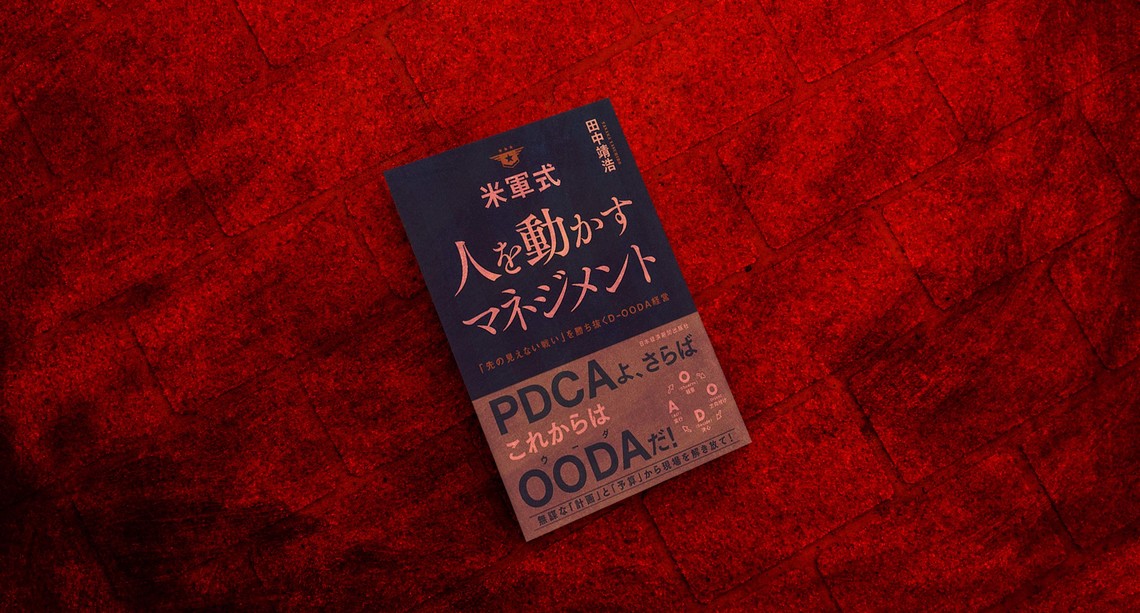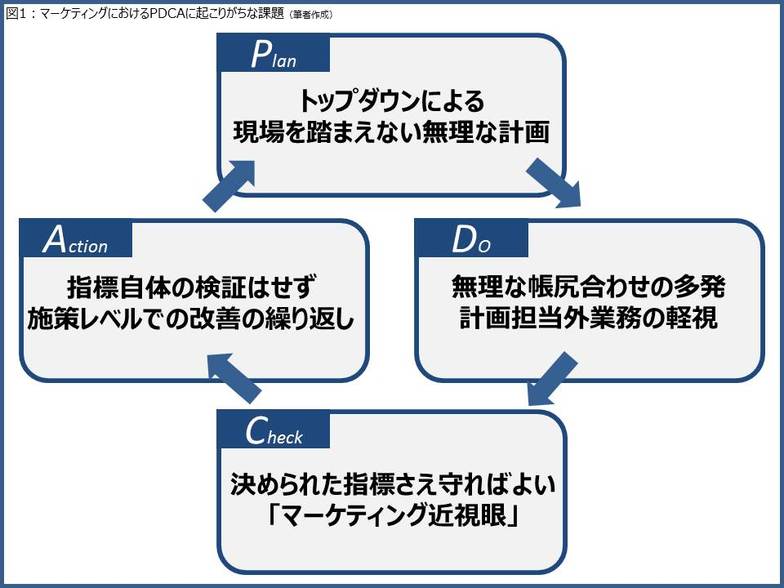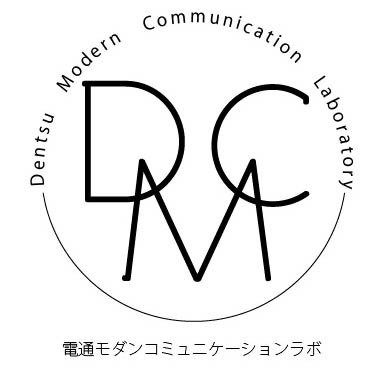
Is mental stagnation spreading precisely because we live in an era of visualizability?
―"Let's run the PDCA cycle at full throttle to achieve our KPI targets!"―
In digital-era marketing operations, the so-called PDCA cycle—①strategy and KPI design, setting target figures; ②executing initiatives regardless; ③visualizing results and reporting; ④identifying causes and considering countermeasures—has permeated everywhere.
Compared to the "just do it!" approach of yesteryear, this is considerably more rational... Yet conversely, having observed various marketing environments firsthand, I sense the rampant spread of "PDCA sickness."
"Illness? What's wrong with focusing on PDCA to hit KPI targets?!" I can already hear the objections. What I mean is a kind of mental stagnation – the symptom where, as long as you stay on the PDCA track, you don't need to look at other possibilities. I personally feel a sense of crisis that this is happening everywhere.
This time, I'd like to explore the question: "Why do organizations with top talent, abundant resources, and a perfect PDCA cycle sometimes lose so easily?" from the book 'U.S. Military-Style Management: How to Motivate People' (Nikkei Publishing).
The PDCA Disease... The Challenges Facing the Defeated Iraqi Army and Japanese Companies
The losers possessed trained soldiers and high-performance weapons yet were defeated.
The victors won through a "new form of warfare" that prevented the enemy from fully utilizing their capabilities. (P.2)
While we'll omit the historical fact that the Iraqi army was defeated by the US-led coalition in the Gulf War, it's said the Iraqi army possessed highly capable personnel and weaponry at the time, backed by a "perfect military strategic plan."
However, in reality, they were easily outmaneuvered by the coalition forces and ultimately defeated due to operational dysfunction on the ground.
"Management by planning" can lead to tragic outcomes if misapplied. (P.16)
This book points out the "PDCA disease" in Japanese companies mentioned earlier. While planning and management should certainly be done appropriately, it states that organizations with many talented individuals are increasingly becoming obsessed with plans and their flawless execution, sometimes leading to major defeats. The fundamental issues inherent in PDCA seem to be becoming apparent these days.
At a certain publishing company, editors were ordered to "submit lots of proposals!" and to achieve this, "how many proposals were submitted per month" became a KPI. As a result, the editors could only produce uninspiring proposals. (P.86)
A company that began cutting prices to meet an "unrealistic sales budget" saw its gross profit margin gradually decline. (P.87)
Why do we see cases of unrealistic KPI setting or the design of "foolish KPIs" that miss the fundamental point?

Now, in our business world. Aren't many companies progressing toward becoming like the Iraqi army?
Worse still, aren't they overemphasizing planning and control, actively pushing themselves toward becoming like the Iraqi army?
If so, we must escape this state immediately. The key lies in "maneuver warfare." (P.3)
Precisely because the world is unpredictable, we must shift to "maneuver warfare" premised on change.
The concept referred to in this book as "Maneuver Warfare" succinctly expresses how crucial it is for the field to think and act autonomously, as opposed to so-called "attrition warfare."
It cites Seven-Eleven, which was an early adopter of POS systems in Japan, as a company that quickly recognized the danger of drowning in a sea of POS data. It emphasizes the importance of also paying attention to what isn't reflected in the data and of humans themselves investing time and effort into ordering.
Furthermore, Ryo Morikawa, former CEO of LINE, reportedly found that while he had previously implemented management based on various "plans," the rapidly changing digital industry frequently presented unforeseen circumstances, necessitating repeated plan revisions. This led to criticism that the president was capricious and impossible to follow, or conversely, that without plans, no one knew what he was thinking. Consequently, he shifted to a management style where only minimum target figures and broad policy guidelines were communicated to business leaders, leaving the rest to their discretion.
The ability to act appropriately and swiftly against "anticipated attacks."
The ability to respond flexibly and effectively to "unanticipated attacks." (P.31)
There is actually a world of difference between these two points, and this book touches on the potential of a framework to achieve the latter.
The Potential Application of the "D-OODA" Model in Management and Marketing
To translate the above maneuver warfare into more practical terms, the author proposes the "D-OODA" model. The foundation of the "D-OODA" model is the "OODA" framework.
"OODA"? You may not be familiar with it, but it's actually the fundamental cycle of maneuver warfare: "Observe → Orient → Decide → Act."
The author proposes combining this OODA framework—which defines the loop of agile decision-making and execution—with the "Operational Design" methodology during the goal design phase to ensure "correct problem definition."

Toward strategies and organizations where people truly engage. The author interprets the core of "Operational Design" as the following three elements within the "D-OODA" framework's "D (Design)":
① Dialogue based on the knowledge and insights of superiors and subordinates
② Agreement on the 'broad outline' of the operation
③ Correct 'goal setting' and flexible 'execution authority'
You might think ① is obvious!? But isn't this surprisingly often neglected?
Strategies born from a dialogue process and woven together through the accumulation of diverse insights tend to feel truly convincing.
In closing. ~The Power of D-OODA Seen in Defeating Shin Godzilla!~
Frankly, the PDCA cycle is an extremely important framework, and I have no intention of denying its value. Furthermore, whether this D-OODA model approach will truly work within domestic marketing organizations remains an unknown.
However, the film Shin Godzilla made me feel the immense potential of the "D-OODA" model.
In the film, faced with the national crisis of Godzilla, the response shifts from the traditional PDCA-style organizational approach to a necessary, flexible "D-OODA" type of organizational response... Well, any more would be a spoiler, but I think those who've seen it will really relate. Seriously, it was a fantastic movie. Also, I almost forgot something important – needless to say, I think the heroine, Satomi Ishihara, is absolutely wonderful.
If the "D-OODA" model ever gets its chance to shine in the real business world... it might just be when nations or corporations face a Godzilla-level super-crisis and survive through scrap-and-build.
That's all from the marketing front lines.








